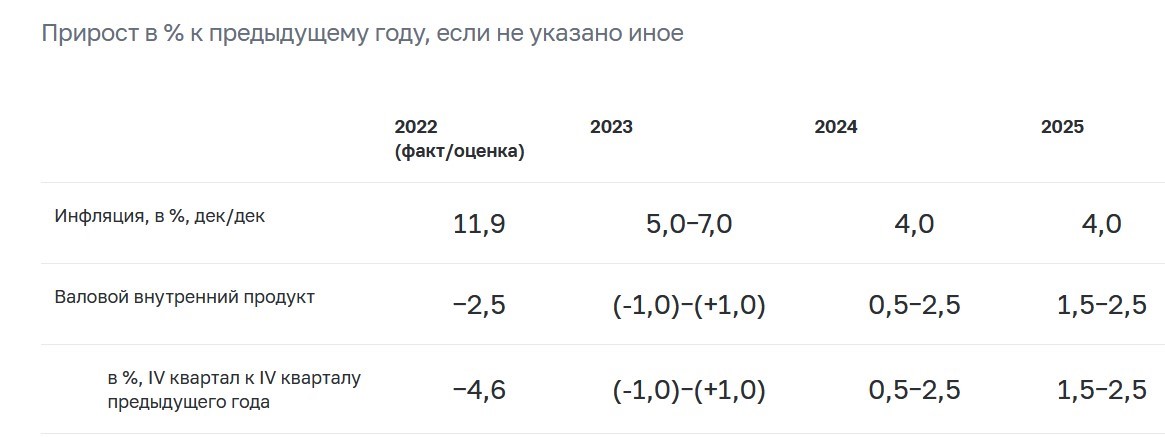Dmitry Kiselev in Vesti Nedeli proudly reports on the economic results of 2022:
“The government, which is implementing the president's course, is preparing for a report to the State Duma, which is scheduled for the 20th of March. But some optimistic figures are already emerging. <…>
A fundamentally important indicator. In Russia, there has been a real increase in GDP – gross domestic product. Yes, in general, at the end of the year, the decline is about 3%, but in the fourth quarter it is already growing! Small – 0.3%, but growth! This means that the curve on the graph does not move down, but up. And this is a trend. All negative, catastrophic forecasts are confounded. It will be even better. Let's hold on."

However, the Central Bank, published in February, the report on monetary policy is not so optimistic. The report includes the following table:

That is, GDP in the last quarter of the year not only did not move to growth, but its fall in comparison with the corresponding period of the previous year turned out to be almost twice as much as for the year as a whole. What did Kiselyov mean by declaring growth? Probably quarterly dynamics. Data for the fourth quarter is not publicly available yet (they are usually published in late March – early April), but let's take Kiselev's word for it: for example, in the fourth quarter, GDP grew by 0.3% compared to the third quarter. But can this be considered an achievement?
The methodology for calculating GDP is such that every year in the first quarter it turns out to be minimal, grows throughout the year, reaches a maximum in the fourth quarter, then falls and starts growing again. This is clearly seen in the chart published by Rosstat:

There was only one deviation from this scenario: in the second quarter of 2020, GDP slightly decreased compared to the first quarter due to the pandemic. The fourth quarter of 2022 is not yet reflected in the Rosstat chart. But here's what's interesting: in the third quarter, GDP in quarterly terms has already grown, and by 7%. And if in the fourth quarter the growth compared to the previous quarter was only 0.3%, then the trend looks not at all as positive as Kiselev is trying to present. If he means the dynamics with the exclusion of the seasonal factor (orange line on the Rosstat chart), then there is nothing to rejoice either: this is stagnation after a noticeable drop in the II quarter. By the way, the Central Bank predicts that in 2023 GDP will remain approximately at the level of 2022, and with some probability it may not return to pre-war indicators even by 2025.


